LANGUEDOC-ROUSSILLON
Plants and Animals

Plants and Animals
Popular destinations FRANCE
| Alsace | Ardeche | Auvergne |
| Brittany | Burgundy | Cevennes |
| Corsica | Cote d'azur | Dordogne |
| Jura | Languedoc-roussillon | Loire valley |
| Lot | Normandy | Picardy |
| Provence |
Plants and Animals
Plants
Due to the varied climate, the composition of the soil and man's interventions in nature, there are many different forms of plant life in Languedoc-Roussillon.
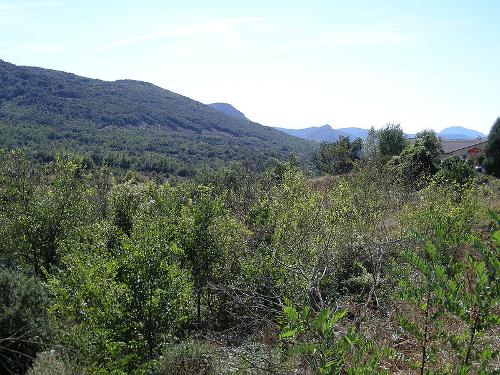 Vegatation Languedoc-RoussillonPhoto: Ji-Ele in the public domain
Vegatation Languedoc-RoussillonPhoto: Ji-Ele in the public domain
The best example of human intervention is the olive tree. This tree was only introduced by the Greeks around 500 years BC. Also characteristic trees such as the orange tree, the almond tree, the cedar tree, the eucalyptus, the mimosa and the palm tree are not indigenous. Equally characteristic of Languedoc-Roussillon, but indigenous, are the plane tree, the cypress and the micocoulier, a type of elm. Common pine species, especially in the mountainous hinterland, are the stone pine, the maritime pine and the Aleppo pine. The higher one goes, the more spruce and larch one finds, especially on the shady sides of the mountains. On the sun side, there are also many beech trees.
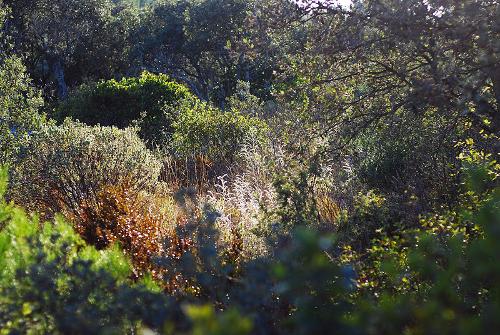 Garrigue Languedoc-RoussillonPhoto: Piarou CC 2.0 no changes made
Garrigue Languedoc-RoussillonPhoto: Piarou CC 2.0 no changes made
Behind the coastal plain, from Nîmes to Narbonne, and in the Corbières, the 'garrigue' is common, the typical vegetation (maximum 2 m high) of poor limestone soil, with a.o. A small variant of the holm oak, the 'laurel-tin', the salsapareille, the érable de Montpellier (a kind of maple bush), the kermes oak, the box tree, the cistus rose, the prickly broom and herbs such as rosemary, thyme, lavender, juniper, spurge and various grasses. The word garrigue is probably derived from the Provençal word 'garric', which means 'tree of the rock', denoting the kermes Oak (another explanation is the Occitan 'garoulia', which also means kermes Oak).
Near Narbonne is the mountain area Massif de la Clape. Here grows a buttonwort that is unique, the Centaurea corymbosa; the plant attracts many crickets, including three species that occur nowhere else in the world.
On the subalpine grasslands of the Pyrenees (approx. 2,400 m altitude), endemic species such as the Pyrenean lily, delphinium, tree oxalis and stone creek grow.
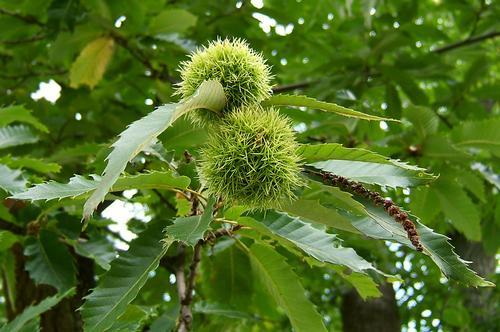 Sweet Chestnut LanguedocPhoto: Wildfeuer CC 3.0 no changes made
Sweet Chestnut LanguedocPhoto: Wildfeuer CC 3.0 no changes made
The sweet chestnut is the most characteristic tree of the Cévennes. This elegant tree, which thrives in the acidic, nutrient-poor soil of the Cevennes, can be found almost everywhere in the Cevennes.
The sweet chestnut was also called the 'bread tree of the Cévennes', because for centuries it was one of the most important food sources of the Cévennes. Nowadays, most chestnut groves are neglected, outgrown or diseased, and therefore of little use to the population.
The Petite Camargue is very diverse in terms of plant and animal life. This is because the northern part is much less saline than the southern part. The north is therefore characterised by many deciduous trees, such as alder, willow, elm, alder and ash. The marshy grounds have a lot of bulrush and reed.
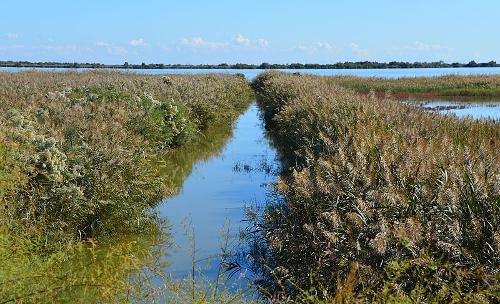 Camargue Languedoc-RoussillonPhoto: Clément Bardot CC 4.0 no changes made
Camargue Languedoc-RoussillonPhoto: Clément Bardot CC 4.0 no changes made
The higher parts of the Camargue are very dry because of the sun and the mistral, which blows here regularly. The vegetation here consists mainly of grassy plains and in the areas with a high salt content even less grass grows, including salt marsh grasses and salt meadows. The dunes in the south are covered with marram grass, blue sea holly and Mediterranean shrubs.
The brackish water lakes of the Camargue are covered with water ranunculus, pondweed and various kinds of bulrush. Salad fritillaries, tamarisk, sea lavender and glasswort are also plants that thrive in brackish environments.
Animals
Languedoc-Roussillon is inseparable from the pink flamingos and wild horses of the Camargue, but it is also home to other large mammals such as the black native Camarguestier, the wild boar and the mouflon. Small predators are badger, genet, lynx, polecat, stone marten and fox. Beavers have been released in the Rhone and are doing well in their new habitat. Special is the rare water mole, a water mammal with a sucking snout. In a wooded park in Ste-Eulalie, a herd of European bison or wisent can be found.
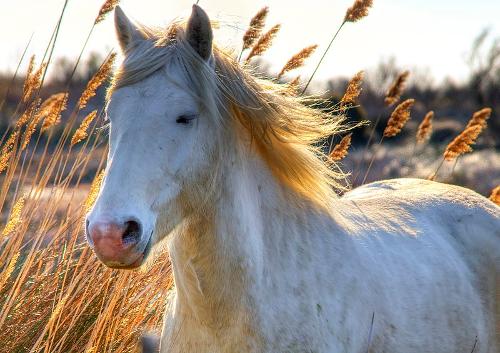 White horses in the CamarguePhoto: Wolfgang Staudt CC 3.0 no changes made
White horses in the CamarguePhoto: Wolfgang Staudt CC 3.0 no changes made
Reptiles, amphibians and insects are found in many varieties in this part of France, including different types of turtles, snakes (e.g. the 2-metre-long field snake), hazelworms, geckos, lizards (e.g. the pearl lizard), frogs (e.g. the laughing frog), salamanders, butterflies, beetles and praying mantises. The song cicada with its piercing sound is typical for the atmosphere in Languedoc-Roussillon.
Languedoc-Roussillon is also home to many species of birds including magpies, woodcocks, jays, hawks, barn owls, larks, pied woodpeckers, green woodpeckers, goldfinches, spotted flycatchers, sparrow hawks, falcons, golden eagles, snake eagles, Bonelli's eagles and griffon vultures.
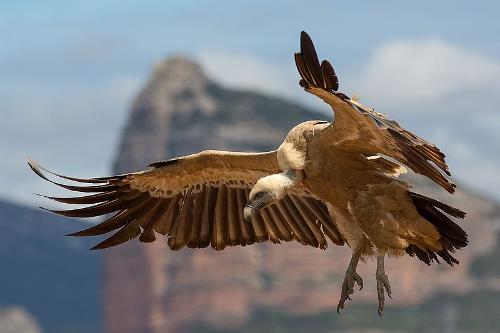 Griffon vulture Languedoc-RoussillonPhoto: Pierre Dalous CC 3.0 no changes made
Griffon vulture Languedoc-RoussillonPhoto: Pierre Dalous CC 3.0 no changes made
The Mediterranean Sea is home to a very diverse marine fauna, including sea urchins, starfish, serpent stars, sea cucumbers, crabs, shrimps, lobsters, jellyfish, sea anemones, sponges, octopuses, cuttlefish, squid, sea turtles, dogfish, catsharks, wolf fish, moray eels and marine fish such as mullet, goby, conger, tuna, goby, redfish, common sole, mullet and bonito.
The Cevennes National Park is home to 89 mammal species, 208 bird species, 17 different reptile species, 18 amphibian species, 24 fish species and 1,200 flower species. A number of species that originally belonged here have been successfully reintroduced, including deer, beavers, chamois and griffon vultures.
The Petite Camargue is very diverse in terms of plant and animal life. This is because the northern part is much less saline than the southern part.
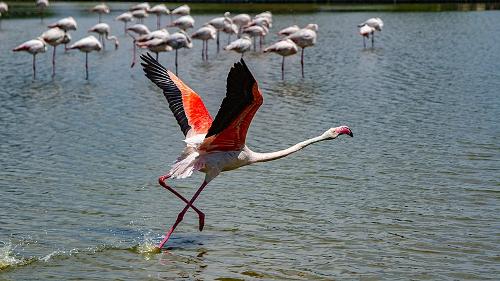 Pink Flamingo's in the CamarguePhoto: GioTavani CC 4.0 no changes made
Pink Flamingo's in the CamarguePhoto: GioTavani CC 4.0 no changes made
Especially in the freshwater part of the Camargue, the birdwatcher will have a lot of fun (approx. 300 species), with a.o. the pink flamingo (which in Europe only breeds here!), heron, cattle egret, purple heron, night heron, bittern, marsh harrier, black ibis and many marsh birds. Apart from some newts, frogs and the bog turtle, there are remarkably few reptiles and amphibians living here. The marsh beavers, which differ from the common beavers by their rounded tails, are special.
The dry, saline areas of the Camargue are populated by badgers, foxes and rabbits. Also the ore hookworm, the ladder snake and the Girondine slippery snake can be found here.
The banks of the brackish water lakes are home to breeding colonies of herring gull, black-headed gull, little tern, great tern, avocet, redshank and crowned duck. The open water areas are inhabited by stilts, teals, pochards, tufted ducks, widgeons, shovelers and pintails.
In the étangs of the Petite Camargue, shellfish such as carpetshell, stone mussel and flat shell are caught. The best known of the approximately fifty fish species are eel, carp and zander in the freshwater part. In the brackish water, the pipefish and the seahorse.
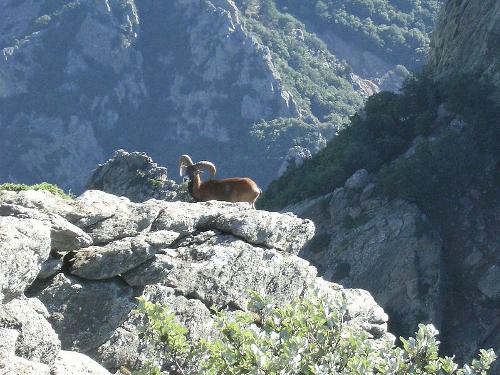 Mouflon LanguedocPhoto: Fagairolles 34 CC 4.0 no changes made
Mouflon LanguedocPhoto: Fagairolles 34 CC 4.0 no changes made
The Parc Naturel Régional du Haut-Languedoc is home to the most important concentration of mouflon in Europe.
The nature reserve Réserve Naturelle le Forêt de la Massane is an insect paradise, with more than 1200 species of beetles alone.
Sources
Bongartz, M. / Languedoc-Roussillon
ANWB
Brutinot, L. / Languedoc-Roussillon
ANWB
Deggau, H. / Wandelgids Cevennen en Languedoc
ANWB
Encarta Encyclopedie
Graaf, G. de / Languedoc-Roussillon
ANWB
Hiddema, B. / Languedoc-Roussillon : Camargue, Cevennen
ANWB
Languedoc-Roussillon
Lannoo
Languedoc Roussillon : Gorges du Tarn, Cevennen, Carcassonne, Perpignan
Lannoo
Pijnenburg, H. / Cevennen, Languedoc
Gottmer/Becht
CIA - World Factbook
BBC - Country Profiles
Copyright: Team The World of Info